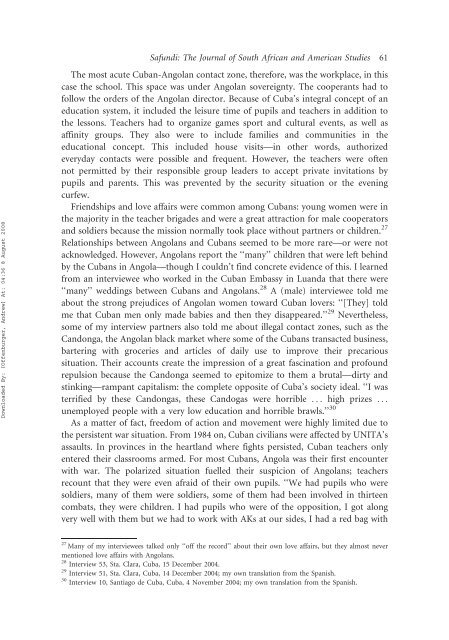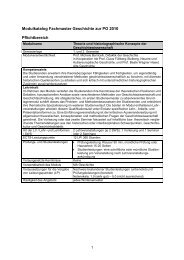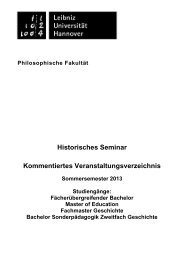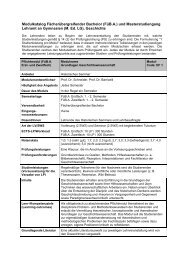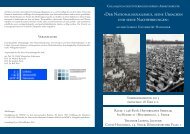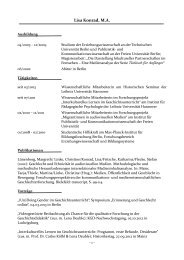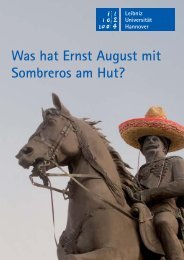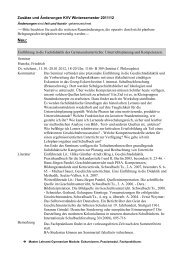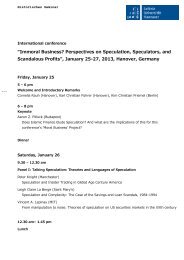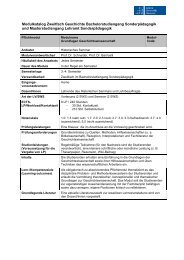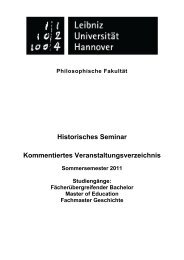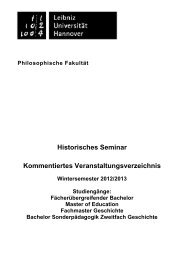''Os Bons Colonizadores'': Cuba's Educational Mission in Angola ...
''Os Bons Colonizadores'': Cuba's Educational Mission in Angola ...
''Os Bons Colonizadores'': Cuba's Educational Mission in Angola ...
Create successful ePaper yourself
Turn your PDF publications into a flip-book with our unique Google optimized e-Paper software.
Downloaded By: [Offenburger, Andrew] At: 04:36 8 August 2008<br />
Safundi: The Journal of South African and American Studies 61<br />
The most acute Cuban-<strong>Angola</strong>n contact zone, therefore, was the workplace, <strong>in</strong> this<br />
case the school. This space was under <strong>Angola</strong>n sovereignty. The cooperants had to<br />
follow the orders of the <strong>Angola</strong>n director. Because of Cuba’s <strong>in</strong>tegral concept of an<br />
education system, it <strong>in</strong>cluded the leisure time of pupils and teachers <strong>in</strong> addition to<br />
the lessons. Teachers had to organize games sport and cultural events, as well as<br />
aff<strong>in</strong>ity groups. They also were to <strong>in</strong>clude families and communities <strong>in</strong> the<br />
educational concept. This <strong>in</strong>cluded house visits—<strong>in</strong> other words, authorized<br />
everyday contacts were possible and frequent. However, the teachers were often<br />
not permitted by their responsible group leaders to accept private <strong>in</strong>vitations by<br />
pupils and parents. This was prevented by the security situation or the even<strong>in</strong>g<br />
curfew.<br />
Friendships and love affairs were common among Cubans: young women were <strong>in</strong><br />
the majority <strong>in</strong> the teacher brigades and were a great attraction for male cooperators<br />
and soldiers because the mission normally took place without partners or children. 27<br />
Relationships between <strong>Angola</strong>ns and Cubans seemed to be more rare—or were not<br />
acknowledged. However, <strong>Angola</strong>ns report the ‘‘many’’ children that were left beh<strong>in</strong>d<br />
by the Cubans <strong>in</strong> <strong>Angola</strong>—though I couldn’t f<strong>in</strong>d concrete evidence of this. I learned<br />
from an <strong>in</strong>terviewee who worked <strong>in</strong> the Cuban Embassy <strong>in</strong> Luanda that there were<br />
‘‘many’’ wedd<strong>in</strong>gs between Cubans and <strong>Angola</strong>ns. 28 A (male) <strong>in</strong>terviewee told me<br />
about the strong prejudices of <strong>Angola</strong>n women toward Cuban lovers: ‘‘[They] told<br />
me that Cuban men only made babies and then they disappeared.’’ 29 Nevertheless,<br />
some of my <strong>in</strong>terview partners also told me about illegal contact zones, such as the<br />
Candonga, the <strong>Angola</strong>n black market where some of the Cubans transacted bus<strong>in</strong>ess,<br />
barter<strong>in</strong>g with groceries and articles of daily use to improve their precarious<br />
situation. Their accounts create the impression of a great fasc<strong>in</strong>ation and profound<br />
repulsion because the Candonga seemed to epitomize to them a brutal—dirty and<br />
st<strong>in</strong>k<strong>in</strong>g—rampant capitalism: the complete opposite of Cuba’s society ideal. ‘‘I was<br />
terrified by these Candongas, these Candogas were horrible ... high prizes ...<br />
unemployed people with a very low education and horrible brawls.’’ 30<br />
As a matter of fact, freedom of action and movement were highly limited due to<br />
the persistent war situation. From 1984 on, Cuban civilians were affected by UNITA’s<br />
assaults. In prov<strong>in</strong>ces <strong>in</strong> the heartland where fights persisted, Cuban teachers only<br />
entered their classrooms armed. For most Cubans, <strong>Angola</strong> was their first encounter<br />
with war. The polarized situation fuelled their suspicion of <strong>Angola</strong>ns; teachers<br />
recount that they were even afraid of their own pupils. ‘‘We had pupils who were<br />
soldiers, many of them were soldiers, some of them had been <strong>in</strong>volved <strong>in</strong> thirteen<br />
combats, they were children. I had pupils who were of the opposition, I got along<br />
very well with them but we had to work with AKs at our sides, I had a red bag with<br />
27 Many of my <strong>in</strong>terviewees talked only ‘‘off the record’’ about their own love affairs, but they almost never<br />
mentioned love affairs with <strong>Angola</strong>ns.<br />
28 Interview 53, Sta. Clara, Cuba, 15 December 2004.<br />
29 Interview 51, Sta. Clara, Cuba, 14 December 2004; my own translation from the Spanish.<br />
30 Interview 10, Santiago de Cuba, Cuba, 4 November 2004; my own translation from the Spanish.


